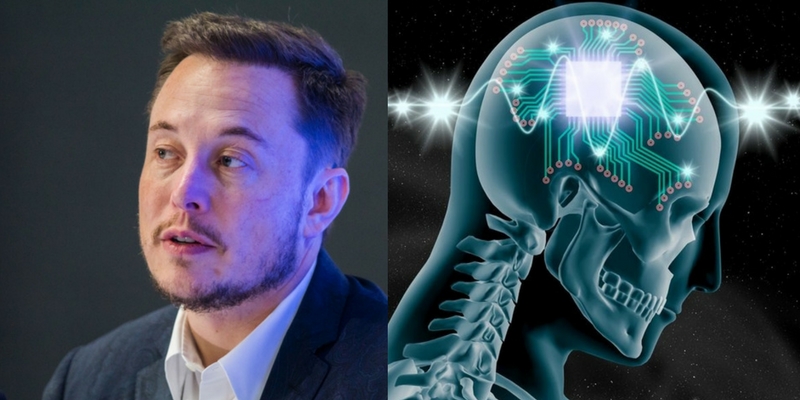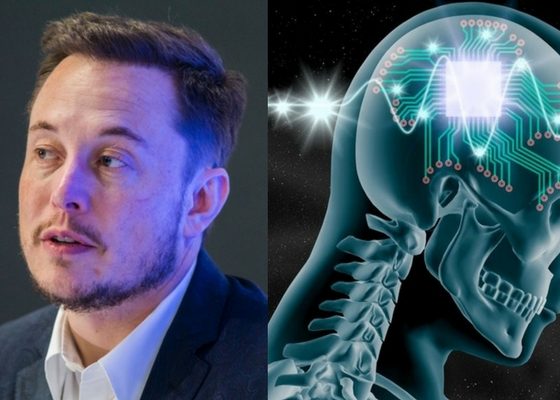

Lifestyle
Elon Musk’s Neuralink to livestream special project update on July 16
Elon Musk’s Neuralink, the venture working to bridging the gap between potential superhuman artificial intelligence (AI) and the human brain itself, is finally providing an update on the research it’s been doing since its formation in 2016. The event will take place on July 16th in San Francisco for a select audience, and a live stream will be provided as well, according to the company’s official Twitter account.
“We’re having an event next Tuesday in San Francisco to share a bit about what we’ve been working on the last two years, and we’ve reserved a few seats for the internet,” the company posted. “It will also be livestreamed, for those who don’t have the chance to come!”
An update on Neuralink’s research activity was teased in September last year by Musk during a live interview. “I think [Neuralink will] have something interesting to announce in a few months that’s at least an order of magnitude better than anything else, probably better than anyone thinks is possible,” he revealed.
It will also be livestreamed, for those who don't have the chance to come!
— Neuralink (@neuralink) July 11, 2019
A long-form explainer on Neuralink’s purpose was posted by Tim Urban on Wait But Why in April 2017 after Musk gave him first-hand access to the company and its team; however, details beyond that have been scarce.
Some insight on the company has been gleaned from its job postings and permit filings in the last two years. In 2017, Neuralink filed paperwork to build an in-house machine shop and a biological testing laboratory for its facility in San Francisco. The enterprise also filed for a permit from the California Department of Public Health in April 2017, directly referencing the utilization of laboratory animals. While specifics are still missing, the permits at the very least confirm Neuralink is making progress in its endeavors as do their evolving job postings. The theme of the company’s employment needs has gradually shifted from experimental science, engineering, and fabrication to something more explicitly focused on one or a few particularly promising solutions.
In an interview on Axios last November, Musk hinted that Neuralink would first introduce microcontrollers to further advance computer-brain interface technology, i.e., possibly unveil an initial version of what will eventually become a “neural lace.” One of the concerns about the rise of AI is the role humans will have once it’s sufficiently advanced to no longer need our input. A neural lace would address this concern. “I don’t love the idea of being [an AI] house cat, but what’s the solution? I think one of the solutions that seem maybe the best is to add an AI layer,” Musk said during Code Conference 2016.
The technology being developed by Neuralink would theoretically allow us to integrate with computers to access and process information just as well as our AI counterparts. Essentially, our brains will have our very own AI in a cloud that our brains can synthesize with as needed. We already interface with our computers on a regular basis, so the jump from an external device to an internal one would seem to be a natural progression.
Musk also suggested memory functionality as an area for Neuralink to focus on, specifically for issues around Alzheimer’s, during his discussion on Axios. “It’s incredibly sad when a mother forgets her children, and that can be solved, too,” he noted. This concept is in line with marketable technology for therapy use that Musk has hinted at before during his discussions with Tim Urban. “We are aiming to bring something to market that helps with certain severe brain injuries (stroke, cancer lesion, congenital) in about four years,” he was quoted as saying.
Perhaps this therapeutic research will be included in the July 16th event. Or perhaps we’ll see something pulled straight out of science fiction, as he seems to have indicated last year. Both?

Lifestyle
Tesla Model S Plaid battles China’s 1500 hp monster Nurburgring monster, with surprising results
There is just something about Tesla’s tuning and refinement that makes raw specs seem not as game-changing.

The Tesla Model S Plaid has been around for some time. Today, it is no longer the world’s quickest four-door electric sedan, nor is it the most powerful. As per a recent video from motoring YouTube channel Carwow, however, it seems like the Model S Plaid is still more than a match for some of its newer and more powerful rivals.
The monster from China
The Xiaomi SU7 Ultra is nothing short of a monster. Just like the Model S Plaid, it features three motors. It also has 1,548 hp and 1,770 Nm of torque. It’s All Wheel Drive and weighs a hefty 2,360 kg. The vehicle, which costs just about the equivalent of £55,000, has been recorded setting an insane 7:04.957 at the Nurburgring, surpassing the previous record held by the Porsche Taycan Turbo GT.
For all intents and purposes, the Model S Plaid looked outgunned in Carwow’s test. The Model S Plaid is no slouch with its three motors that produce 1,020 hp and 1,420 Nm of torque. It’s also a bit lighter at 2,190 kg despite its larger size. However, as the Carwow host pointed out, the Model S Plaid holds a 7:25.231 record in the Nurburgring. Compared to the Xiaomi SU7 Ultra’s record, the Model S Plaid’s lap time is notably slower.
Real-world tests
As could be seen in Carwow’s drag races, however, Tesla’s tech wizardry with the Model S Plaid is still hard to beat. The two vehicles competed in nine races, and the older Model S Plaid actually beat its newer, more powerful counterpart from China several times. At one point in the race, the Xiaomi SU7 Ultra hit its power limit due to its battery’s temperature, but the Model S Plaid was still going strong.
The Model S Plaid was first teased five years ago, in September 2020 during Tesla’s Battery Day. Since then, cars like the Lucid Air Sapphire and the Xiaomi SU7 Ultra have been released, surpassing its specs. But just like the Model Y ended up being the better all-rounder compared to the BYD Sealion 7 and the MG IM6, there is just something about Tesla’s tuning and refinement that makes raw specs seem not as game-changing.
Check out Carwow’s Model S Plaid vs Xiaomi SU7 drag race video below.
Lifestyle
500-mile test proves why Tesla Model Y still humiliates rivals in Europe
On paper, the BYD Sealion 7 and MG IM6 promised standout capabilities against the Model Y.

BYD is seeing a lot of momentum in Europe, so much so that mainstream media has taken every opportunity to argue that the Chinese automaker has beaten Tesla in the region. But while BYD sales this year in Europe are rising and Tesla’s registrations remain challenged, the raw capabilities of vehicles like the Model Y are difficult to deny.
This was highlighted in a 500-mile challenge by What Car? magazine, which showed that the new Tesla Model Y is more efficient, cheaper to run, and more reliable than rivals like the BYD Sealion 7, and even the nearly 400 KW-charging MG IM6.
Range and charging promises
On paper, the BYD Sealion 7 and MG IM6 promised standout capabilities against the Model Y. The Sealion 7 had more estimated range and the IM6 promised significantly faster charging. When faced with real-world conditions, however, it was still the Model Y that proved superior.
During the 500-mile test, the BYD nearly failed to reach a charging stop, arriving with less range than its display projected, as noted in a CarUp report. MG fared better, but its charging speeds never reached its promised nearly-400 kW charging speed. Tesla’s Model Y, by comparison, managed energy calculations precisely and arrived at each stop without issue.
Tesla leads in areas that matter
Charging times from 25% to 80% showed that the MG was the fastest at 17 minutes, while Tesla and BYD were close at 28 and 29 minutes, respectively. Overall efficiency and cost told a different story, however. The Model Y consumed 19.4 kWh per 100 km, compared to 22.2 for MG and 23.9 for BYD. Over the full trip, Tesla’s charging costs totaled just £82 thanks to its supercharger network, far below BYD’s £130 and MG’s £119.
What Car? Magazine’s testers concluded that despite BYD’s rapid sales growth and the MG IM6’s seriously impressive charging speeds, Tesla remains the more compelling real-world choice. The Model Y just offers stability, efficiency, and a proven charging infrastructure through its Supercharging network. And as per the magazine’s hosts, the Model Y is even the cheapest car to own among the three that were tested.
Watch What Car? Magazine’s 500-mile test in the video below.
Lifestyle
Tesla Cybertruck slapped with world’s least intimidating ticket, and it’s pure cringe
One cannot help but cringe and feel second-hand embarrassment at the idea of a person just driving around with a stack of these babies.

A Cybertruck parked at Stanford Shopping Center in California was recently hit with what might be the most try-hard piece of paper ever slipped under a wiper blade: a “fake citation” accusing the driver of supporting a “fascist car.”
The note, shared on X by Tesla staff program manager Ryan Torres, quickly made the rounds on X, where it quickly gained attention as an example of how not to protest.
The world’s least intimidating ticket
According to the citation, the supposed “violation” was “driving a fascist car.” The remedial action? Take the bus, call an Uber, or ride a bike. The note also dubbed Elon Musk a “chainsaw-wielding Nazi billionaire.” Now, protests against Tesla and Elon Musk have become commonplace this year, but one cannot help but cringe and feel second-hand embarrassment at the idea of a person just driving around with a stack of fake anti-Tesla/Musk citations.
Torres pointed out the irony himself in his post on X. Tesla currently employs over 140,000 Americans, and SpaceX has put the U.S. firmly back at the top of space technology. As Torres put it, maybe the person behind the world’s least intimidating ticket should “read a book on innovation before vandalizing” other people’s property.
Peak performative clownery
Not to mention that the fake ticket’s logic collapses under its own weight. EVs like the Cybertruck are literally designed to reduce emissions, not “destroy the economy.” If anything, Tesla has bolstered the United States’ economy by fueling jobs in engineering, manufacturing, and clean energy. It’s not the first time a Tesla has been the target of vandalism or politically charged notes, but this one stands out for sheer cringe value.
Torres summed it up neatly: “Peak clownery.” On that point, at least, the citation earns full marks. In a way, though, perhaps cringe fake tickets are not as bad as the literal firebombs that were being thrown at Tesla stores and cars earlier this year because some critics were gleefully misinformed about Elon Musk.








